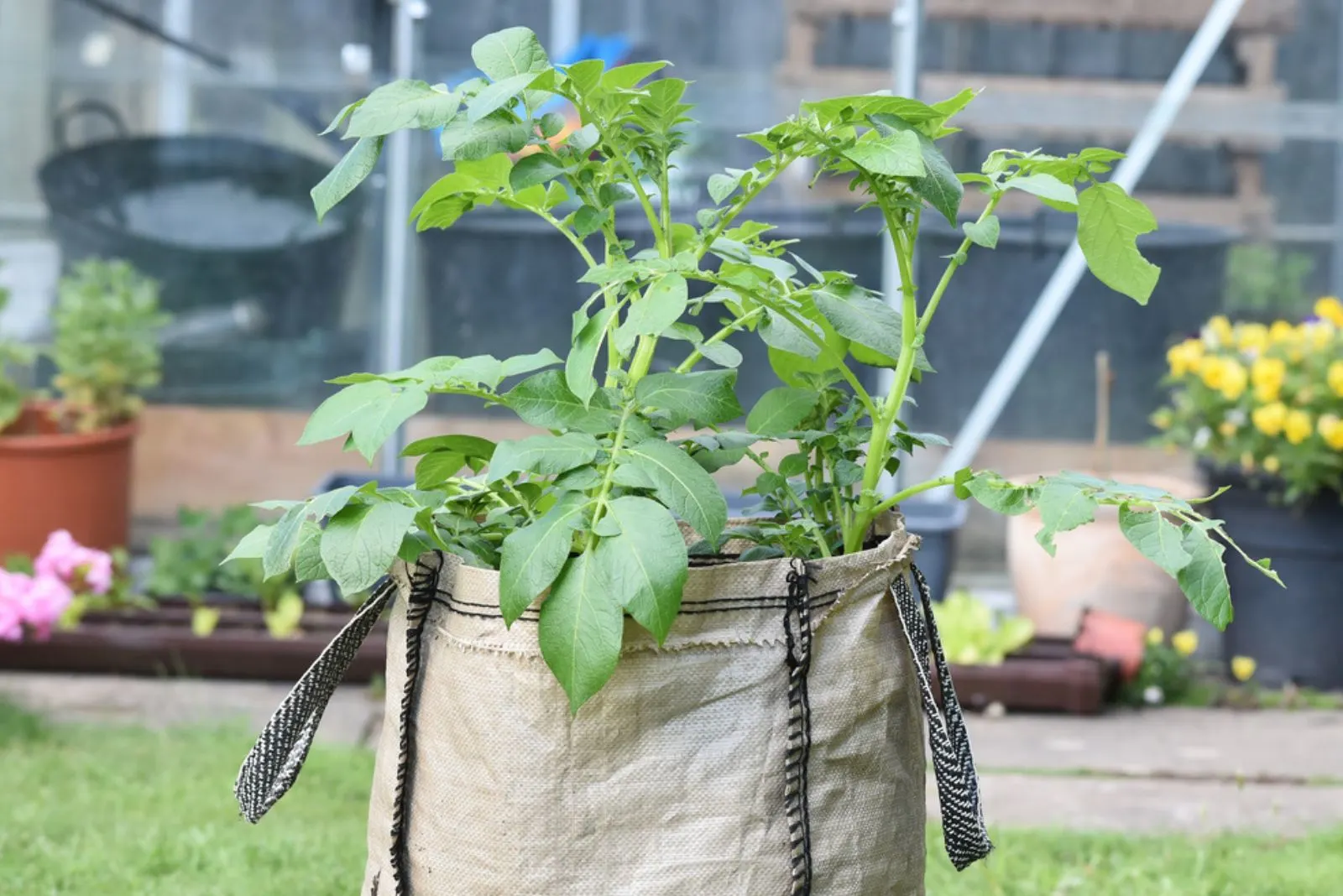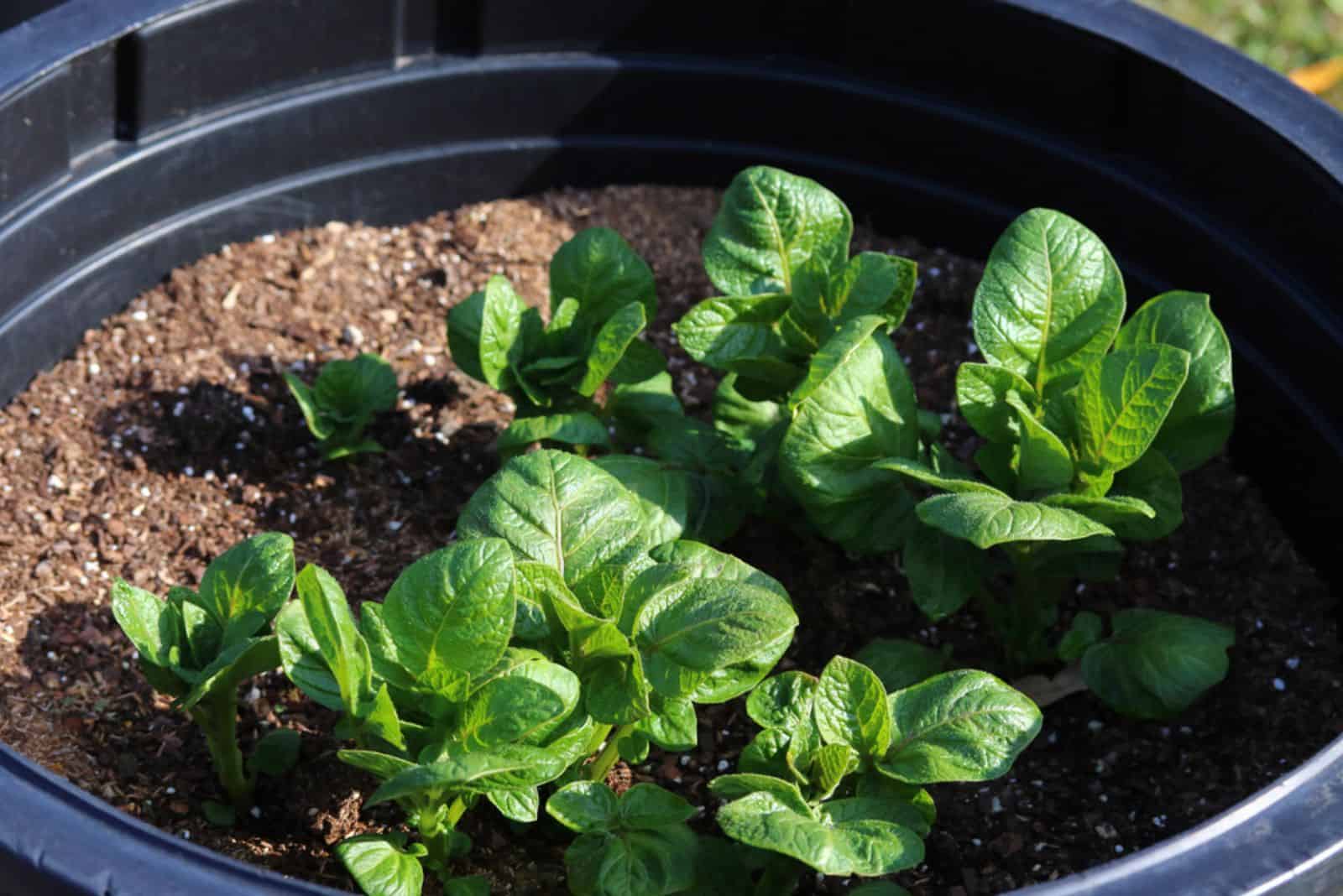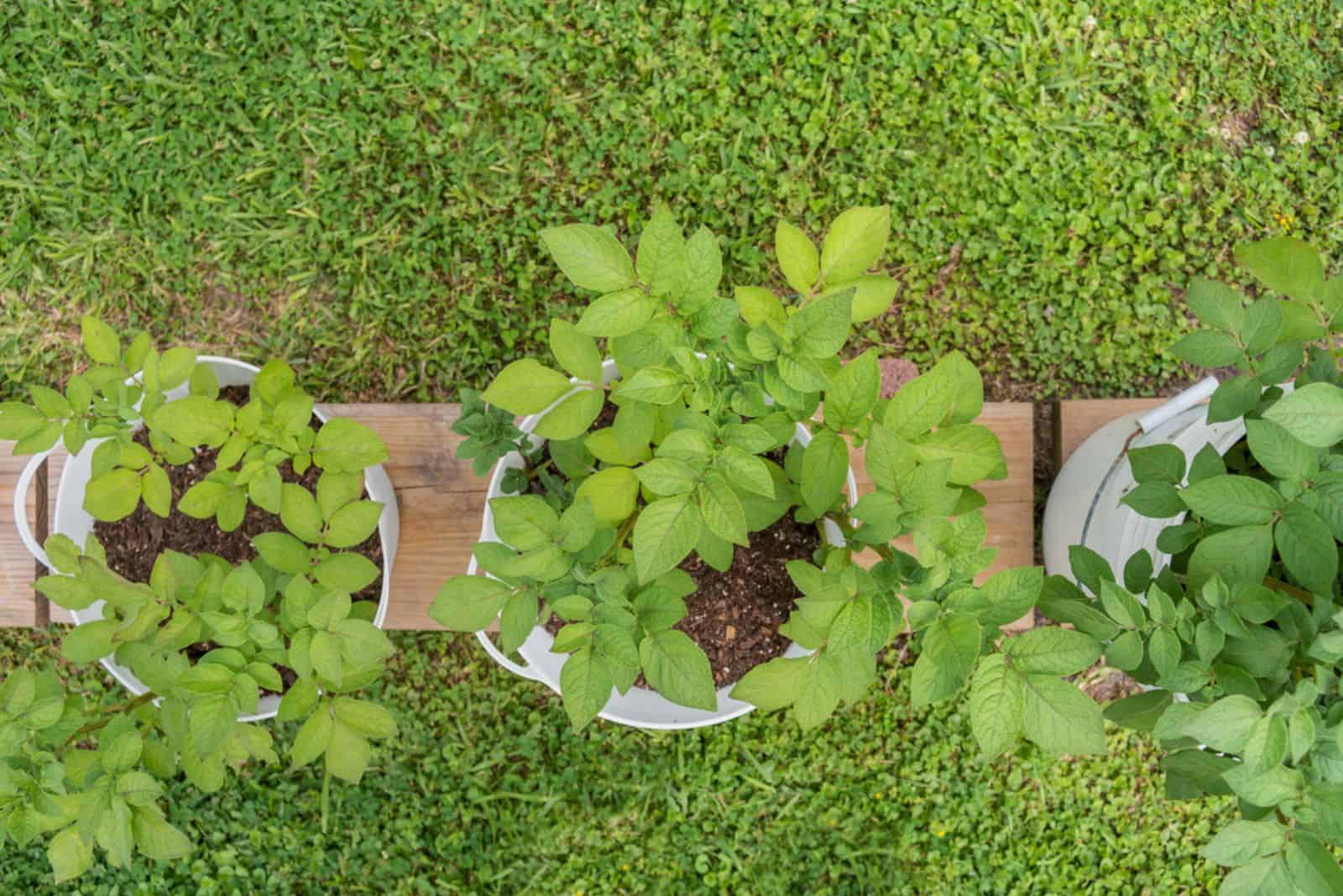If you don’t have a lot of garden space but dream of your own homegrown potatoes, there’s still a way to start potatoes with container gardening.
All you need is a couple of tips from a seasoned gardener and you’ll have some tatties on your table in no time! I have 6 tried-and-true techniques on how to grow potatoes in containers for you right here.
From selecting the best type of container to the perfect growing conditions, let’s start this highly rewarding journey together now!
Is Growing Potatoes In Containers A Good Idea?
I frequently get this question and I always answer that it’s an excellent idea, but of course, there’s more to it than meets the eye.
One of the biggest benefits of this gardening technique is that it’s suitable for growers who don’t have much space. This includes growers who have balconies or small backyards in poor condition.
And there are more benefits of container growing. It allows us to control conditions for our plants, including sun exposure, soil type, irrigation, and feeding.
We can move them to different locations and if we notice something’s wrong, we can quickly fix it.
The major thing that worries gardeners about growing potatoes in containers is the depth of potato roots and if they’ll have enough space to spread.
Surprisingly, potatoes are adaptable veggies and their roots perform well in containers. Issues with soil and pest infestation are the most common concerns with potato cultivation. Container-grown potatoes will have fewer issues.
Let’s see how to grow them step-by-step.
1. Select The Best Container
Potatoes won’t do well in every type of container, so you need to select the right one.
The first thing to discuss is the size of the potato containers. It should be large enough for the roots to extend and the tubers to develop fully.
I highly recommend containers that are at least 12 inches deep.
After size, it’s time to discuss the container material. Plastic containers are widely available and affordable, but they can be pretty heavy. If you’re using these types of containers, make sure they have holes in the bottom to enhance drainage.
You can use grow bags, which will help you prevent issues such as overwatering and overheating. Make sure to review the disadvantages of grow bags before purchasing them.
Another excellent choice is mesh fabric planters, which are lightweight and porous.
2. Use A Free Draining Soil
One of the main goals when cultivating potatoes in containers is to prevent waterlogging. Choosing the right type of container is the first step but it won’t completely save your potatoes from overwatering.
You need a high-quality free draining potting mix for your potatoes to thrive. The soil should also be rich in nutrients for healthy potato growth.
So, which soil type meets these requirements? It’s actually best to make your own. For example, you can purchase standard potting soil and amend it with compost or well-aged manure to boost nutrient levels.
What about drainage? Materials such as vermiculite and perlite are porous and will enhance air circulation to help the roots to breathe. Water will flow uninterrupted and won’t accumulate. This is essential for potatoes because excess water in the soil leads to rotting.
The last thing to consider when it comes to soil is acidity. The perfect pH range for potted potatoes is from 5.5 to 6.5. I recommend performing a soil test before you plant your tomatoes.
3. Make Enough Room
Potatoes develop into pretty large plants but they don’t need much space when it comes to depth. The essential thing is not to plant them too shallowly because the tubers should never receive direct sun.
You don’t need to bury potato seeds more than 4-6 inches in the soil. When planting your potatoes in containers (or anywhere else) make sure the sprouts point upwards.
New growth above the soil line will form from these sprouts.
4. Put The Container In A Well-lit Spot
Potatoes are sun-loving root vegetables, which is one of the factors that affect the number of potatoes you’ll get per plant.
The less sun your potatoes receive, the poorer the yield will be.
So, you need to put the container with potatoes somewhere it will receive at least 6-8 hours of full sun per day.
Find the sunniest spot in your garden, balcony, or patio, and put the potatoes there.
5. Maintain Soil Moisture
I’m sure you’re surprised to see that potatoes need moisture after reading they’re susceptible to overwatering.
Well, the truth is they won’t survive in overly wet soil but they require moist soil all the time. This means you’ll need to ensure good drainage but never skip watering.
You need to irrigate your potted potatoes when the upper part of the soil dries out.
Drainage holes will allow the excess water to drain, whereas the roots will still have enough moisture to thrive.
Potted potatoes can’t withstand high soil temperatures, so aim to maintain a range between 60 to 70 degrees Fahrenheit. Regular watering will prevent dehydration and regulate temperature, whereas good drainage will prevent waterlogging.
6. Consider Hilling
Many potted potato growers forget hilling. The main benefit of this method is that it will keep your potatoes healthy and ensure a bountiful harvest.
So, what is hilling in this case? It involves gradually adding soil to a potato container until it gets to the top.
This technique will encourage the growth of more tubers and keep all tubers from sun exposure. Remember, tubers should never be exposed to full sun because they will turn green and release toxic substances. (1)
What Can Go Wrong
Generally speaking, it’s not that hard to cultivate potatoes in containers. However, some issues can occur, especially if you don’t pay attention to conditions from the very beginning.
The most common one is, unsurprisingly, overwatering. Beginner growers struggle to maintain moisture in the soil and often waterlog it.
But there are other things to pay attention to that happen just as frequently. Pests and diseases aren’t rare in potatoes, and potted potatoes aren’t an exception.
Regular inspection and timely treatment is the key to solving infestation and infection. You can use different methods for disease and pest management. Try to use organic solutions but if none of them work, go with chemical treatment.
You should also ensure support for the potato leaves by using a wooden frame or bamboo canes for smaller pots.
Is There A Need For Chitting?
If you ask experienced potato growers what to do to promote potato growth, they’ll most certainly mention the chitting method.
This is actually a technique for speeding up potato sprouting by leaving them in a cool spot with a lot of light. It’s an excellent way to give your potted potatoes a head start!
Now that you have the theoretical part of potato container gardening down, grab your gardening gloves and apply everything you learned to get the best potato yield you could imagine!
Until next time!
References
1. “Green Potatoes: The Problem.” CropWatch, 22 July 2019, https://cropwatch.unl.edu/potato/greening





